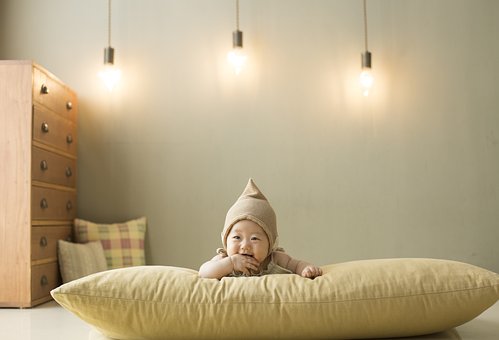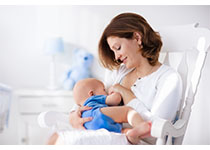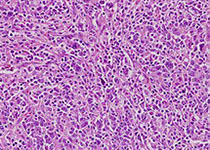优质囊胚冷冻保存超过5年会降低植入率和活产率吗?
2025-02-27 生殖医学论坛 生殖医学论坛 发表于陕西省
胚胎玻璃化冷冻保存超过5年是否会影响冷冻胚胎移植(FET)后的妊娠结局?
STUDY QUESTION
研究问题
Does vitrification cryopreservation of embryos for more than 5 years affect the pregnancy outcomes after frozen embryo transfer (FET)?
胚胎玻璃化冷冻保存超过5年是否会影响冷冻胚胎移植(FET)后的妊娠结局?
SUMMARY ANSWER
总结回答
Vitrification cryopreservation of good-quality blastocysts for more than 5 years is associated with a decrease in the implantation rate (IR) and live birth rate (LBR).
高质量囊胚经过超过5年的玻璃化冷冻保存后,其着床率(IR)和活产率(LBR)会有所降低。
WHAT IS KNOWN ALREADY
已知情况
Previous studies have predominantly focused on embryos cryopreserved for relatively short durations (less than 5 years), yet the impact of extended cryopreservation duration on pregnancy outcomes remains a controversial issue. There is a relative scarcity of data regarding the efficacy and safety of storing embryos for 5 years or longer.
以往的研究主要集中于冷冻保存时间相对较短(少于5年)的胚胎,然而,长期冷冻保存对妊娠结局的影响仍然是一个有争议的问题。在保存5年或更长时间方面,其有效性和安全性的数据相对较少。
STUDY DESIGN, SIZE, DURATION
研究设计、规模与时长
This retrospective study involved 36 665 eligible vitrified-thawed embryo transfer cycles from 1 January 2016 to 31 December 2022, at a single fertility center in China.
本项回顾性研究纳入了中国某生育中心自2016年1月1日至2022年12月31日共计36,665例符合条件的玻璃化冷冻-解冻胚胎移植周期。
PARTICIPANTS/MATERIALS, SETTING, METHODS
参与者/材料、背景、方法
Patients were divided into three groups according to embryo storage time: Group 1 consisted of 31 565 cycles, with storage time of 0–2 years; Group 2 consisted of 4458 cycles, with a storage time of 2–5 years; and Group 3 included 642 cycles, with storage time exceeding 5 years. The main outcome measures were IR and LBR. Secondary outcome variables included rates of biochemical pregnancy, multiple pregnancy, ectopic pregnancy, and miscarriage, as well as neonatal outcomes. Reproductive outcomes were analyzed as binary variables. Multivariate logistic regression analysis was used to explore the effect of preservation time on pregnancy outcomes after correcting for confounding factors. In addition, we also assessed neonatal outcomes, such as large for gestational age (LGA) and small for gestational age (SGA).
根据患者的胚胎保存时间,将其分为三组:第一组包含31,565个周期,胚胎保存时间为0~2年;第二组包含4,458个周期,胚胎保存时间为2~5年;第三组包含642个周期,胚胎保存时间超过5年。主要观察指标为着床率和活产率。次要观察变量包括生化妊娠率、多胎妊娠率、异位妊娠率和流产率,以及新生儿结局。在分析中,生育结局作为二元变量分析。在校正混杂因素后,采用了多变量逻辑回归分析胚胎保存时间对妊娠结局的影响。此外,我们还评估了新生儿结局,包括大于胎龄儿(LGA)和小于胎龄儿(SGA)的情况。
MAIN RESULTS AND THE ROLE OF CHANCE
主要结果及偶然因素的作用
IRs in the three groups (0–2, 2–5, and >5 years) were 37.37%, 39.03%, and 35.78%, respectively (P=0.017), and LBRs in the three groups were 37.29%, 39.09%, and 34.91%, respectively (P=0.028). After adjustment for potential confounding factors, compared with the 0–2 years storage group, prolonged embryo vitrification preservation time (2–5 years or >5 years) did not affect secondary outcomes such as rates of biochemical pregnancy, multiple pregnancy, ectopic pregnancy, and miscarriage (P>0.05). But cryopreservation of embryos for more than 5 years reduced the IR (adjusted odds ratio (aOR) 0.82, 95% CI 0.69–0.97, P?0.020) and LBR (aOR 0.76, 95% CI 0.64–0.91, P?0.002). Multivariate stratified analysis also showed that prolonging the cryopreservation time of blastocysts (>5 years) reduced the IR (aOR 0.78, 95% CI 0.62–0.98, P=0.033) and LBR (aOR 0.68, 95% CI 0.53– 0.87, P=0.002). However, no effect on cleavage embryos was observed (P>0.05). We further conducted stratified analyses based on the number and quality of frozen blastocysts transferred, and the results showed that the FET results after transfers of good-quality blastocysts in the >5 years storage group were negatively affected. However, the storage time of non-good-quality blastocysts was not significantly associated with pregnancy outcomes. Regarding the neonatal outcomes (of singletons), embryo vitrification preservation time had no effect on preterm birth rates, fetal birth weight, or neonatal sex ratios. However, as the storage time increased, rates of SGA (5.60%, 4.10%, and 1.18%) decreased, while rates of LGA (5.22%, 6.75%, and 9.47%) increased (P<0.05). After adjusting for confounding factors, the increase in LGA and the decrease in SGA were significantly correlated with the duration of storage time.
三组(胚胎保存时间分别为0~2年、2~5年、超过5年)的着床率分别为37.37%、39.03%和35.78%(P=0.017),活产率分别为37.29%、39.09%和34.91%(P=0.028)。校正潜在混杂因素后,与胚胎保存时间0~2年组相比,延长胚胎玻璃化冷冻保存时间(2~5年或超过5年)对生化妊娠率、多胎妊娠率、异位妊娠率和流产率等次要结局无影响(P>0.05)。但是,胚胎冷冻保存超过5年会降低着床率(校正比值比(aOR):0.82,95%置信区间(CI):0.69–0.97,P=0.020)和活产率(校正比值比:0.76,95%置信区间:0.64–0.91,P=0.002)。多变量分层分析也显示,延长囊胚的冷冻保存时间(超过5年)会降低着床率(校正比值比:0.78,95%置信区间:0.62–0.98,P=0.033)和活产率(校正比值比:0.68,95%置信区间:0.53–0.87,P=0.002)。然而,对于卵裂期胚胎,未观察到冷冻保存时间对其有影响(P>0.05)。我们进一步根据冷冻囊胚移植的数量和质量进行了分层分析,结果表明,在保存时间超过5年的组中,移植高质量囊胚后的冷冻胚胎移植结果受到了负面影响。然而,非高质量囊胚的保存时间与妊娠结局无显著相关性。至于(单胎)新生儿结局,胚胎玻璃化冷冻保存时间对早产率、胎儿出生体重或新生儿性别比例无影响。然而,随着保存时间的延长,小于胎龄儿的发生率(5.60%、4.10%、1.18%)呈下降趋势,而大于胎龄儿的发生率(5.22%、6.75%、9.47%)则呈上升趋势(P<0.05)。在校正混杂因素后,小于胎龄儿的发生率上升和大于胎龄儿的发生率下降与保存时间的长短显著相关。
LIMITATIONS, REASONS FOR CAUTION
局限性及注意事项
This was a retrospective study using data from a single fertility center, even though the data had been adjusted, our findings still need to be validated in further studies.
这是一项基于单个生殖中心数据的回顾性研究,尽管已对数据进行了校正,但结果仍需要进一步的研究验证。
WIDER IMPLICATIONS OF THE FINDINGS
研究发现的更广泛影响
With the full implementation of the two-child policy in China, there may be more patients whose embryos have been frozen for a longer time in the future. Patients should be aware that the IR and LBR of blastocysts are negatively affected when the cryopreservation time is longer than 5years. Couples may therefore consider shortening the time until FET treatment.
随着中国全面二孩政策的实施,未来可能会有更多患者需要更长时间的胚胎冷冻保存。患者应当知晓,当冷冻保存时间超过5年时,囊胚的着床率和活产率会受到负面影响。因此,夫妻可以考虑缩短至冷冻胚胎移植治疗的时间。
参考文献:
Shaoquan Zhan, Chenxing Lin, Qiwang Lin, Jiayu Gan, Chunyan Wang, Yang Luo, Jianqiao Liu, Hongzi Du, Hanyan Liu, Vitrification preservation of good-quality blastocysts for more than 5 years reduces implantation and live birth rates, Human Reproduction, Volume 39, Issue 9, September 2024, Pages 1960–1968, https://doi.org/10.1093/humrep/deae150

本网站所有内容来源注明为“梅斯医学”或“MedSci原创”的文字、图片和音视频资料,版权均属于梅斯医学所有。非经授权,任何媒体、网站或个人不得转载,授权转载时须注明来源为“梅斯医学”。其它来源的文章系转载文章,或“梅斯号”自媒体发布的文章,仅系出于传递更多信息之目的,本站仅负责审核内容合规,其内容不代表本站立场,本站不负责内容的准确性和版权。如果存在侵权、或不希望被转载的媒体或个人可与我们联系,我们将立即进行删除处理。
在此留言














#冷冻胚胎移植# #胚胎玻璃化冷冻#
12